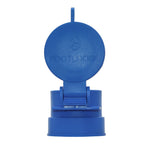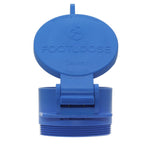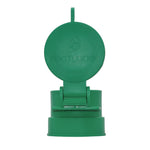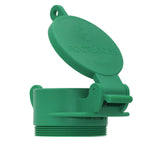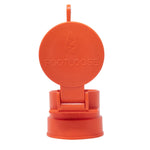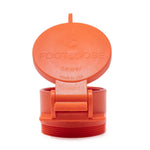You have no items in your shopping cart.
Low water pressure problems, while not life threatening or immediately dangerous, can become annoying over time. Waiting to fill your water filter, wash dishes, or take a shower not only puts a significant burden on you and your co-habitants but can also indicate a problem with your plumbing system.
What Is Normal Water Pressure for a House with a Well?
While many people might believe that low water pressure is simply a feature of their home and is unfixable, if the pressure is ever below 40 to 60 psi (which stands for “pounds per square inch”), something might be wrong with your well system. In this blog post, we’ll review:
- Steps to diagnosing well water pressure issues
- How to increase water pressure from a well
- How to determine if your well water pressure problem has a DIY solution
- When to call a plumber
How to Diagnose the Low Water Pressure Coming From Your Well
How can you tell if you have low water pressure? And if your water pressure is low, how do you fix it? Follow these instructions to diagnose your well system’s water pressure issue.

1. Check the Air Fill Valve
The first thing you should do to determine the cause of low water pressure is run a thorough assessment of the well system itself. This includes understanding where your water pressure is at so you have a good idea of how far you’re able to improve it. Understanding your current psi might also help you avoid cranking your water pressure too high, which can cause noisy pipes, a shortage of hot water, and skyrocketing water bills.
To learn your well system’s psi, first turn off the electricity connected to the well pump. This will prevent accidental electrocution and stop new water from entering the system. Next, you’ll want to drain your system of the existing water. Do this by connecting a hose to the spigot on your pump system; then, turn the “water shut off valve” off. This will prevent air from entering the system. Finally, turn on the drain valve on your spigot to run the water out through the hose. As the water is running, test the air fill valve with a pressure gauge. If the gauge reads below 40 psi, try adjusting the pressure switch and testing again.
2. Have Your Pipes Inspected
When a person experiences a blood clot, it means that an obstruction in the artery is preventing blood from flowing at the rate it should through the body and to the brain. Just as blood clots can cause dangerously low blood pressure and serious issues in humans, clotted pipes can cause serious issues to homes. If your water pressure remains low after you tried experimenting with the air fill valve, call a plumber to have your pipes inspected. Silt and debris build-up can slow your water pressure, but can be easily resolved by a pipe cleaning or the installation of a water softener.
3. Inspect the Water Itself
To reiterate the point made in the second step, a water softener can improve your water pressure issues after a pipe cleaning by removing calcium, iron, and other minerals from your water before it travels through your pipes. This will keep your pipes clean and reduce the likelihood of future water pressure issues.
**Fun fact, water softeners can also reduce the amount of soap you need to wash dishes. Without calcium in the tap water to bind to, your soap will stretch further for the same cleaning effort.
4. Inspect the Pump and Pressure Tank
If none of the above strategies have resolved your water pressure issues, it’s time to have your well pump and your pressure tank inspected. Unfortunately, there’s no DIY solution for this--you need to call an expert who can accurately assess your well plumbing system.
How to DIY Fix Your Well System’s Water Pressure
Once you’ve diagnosed the cause of your well system’s low water pressure, it’s time to fix the issue. Depending on what the meter reads when you check it, there are several different strategies to get your sinks and showerheads running at the pressure you like.
If your pressure gauge reads zero psi, it’s time to install a new pressure tank. A reading of a flat “0” means there’s some issue with the tank that’s affecting either the amount of water it can hold or the amount of pressure it can sustain. Either way, an unresponsive meter calls for a new system. But never fear; replacing a pressure tank yourself is easy, especially if you were the one to install the original system.
To replace your pressure tank entirely, here are the things you’ll need:
- Old hose
- Bucket
- Wrench
- Teflon Tape
Steps to replace your well pressure tank are similar to the steps needed to check the pressure gauge.
1. Turn off the Water Supply
Follow the same process to turn off the water supply as mentioned in the “check air valve” step mentioned above. Once more: be sure to remove the circuit breaker from the pump completely to avoid any electrical surges or electrocution.
2. Drain the Tank
Also mentioned in the “check air valve” step is the process needed to drain the tank. First, locate the valve that allows water to flow and shut it off. Then, connect a hose to the water spigot and turn on the drain valve to empty your tank of any water.
3. Remove and Replace the Tank
To dislodge the broken tank, remove the cap over the pressure switch and any wires that are connecting your tank to supply lines. Then, use a wrench to remove any connections between the pressure tank and your well pump. You should be able to dislodge the pressure tank with a slow rocking and twisting motion.
Once your pressure tank is dislodged and set safely to the side of your work area, redo this process with your new tank. Position the new pressure tank and re-tighten all the fasteners to the well pump. Reconnect all the wires and place the pressure switch cap in place (which can be done using a piece of Teflon tape, wrapped in the same direction that the screw turns). To test the tank’s functionality, simply turn on the water again!
Other Repair Options: Consider Installing a Constant Pressure System
If you live in a house with other people, chances are there will be multiple faucets in use at one time--one person showers, while another washes dishes, while another waters the grass. Understandably, this would cause low water pressure even though nothing is technically wrong with your system. However, a constant pressure system can help maintain consistent water pressure across all of the water sources in your home, despite how many are in use.
When to Call a Plumber

As outlined above, there will be certain aspects to fixing your home’s well water pressure system that should be handled by a professional. Common times at which you should stop what you’re doing and call for back-up from a professional include:
- When you’re working with equipment, such as a pressure tank, that you don’t understand or know how to operate safely.
- When you smell sewage at or around the site of your well, or in your home (here’s a step-by-step guide on what to do if you smell sewer gas).
- Whenever you’re stumped on the root cause of a well or piping issue like low water pressure.
Read Blog: How to Find the Right Plumbing Pipes



